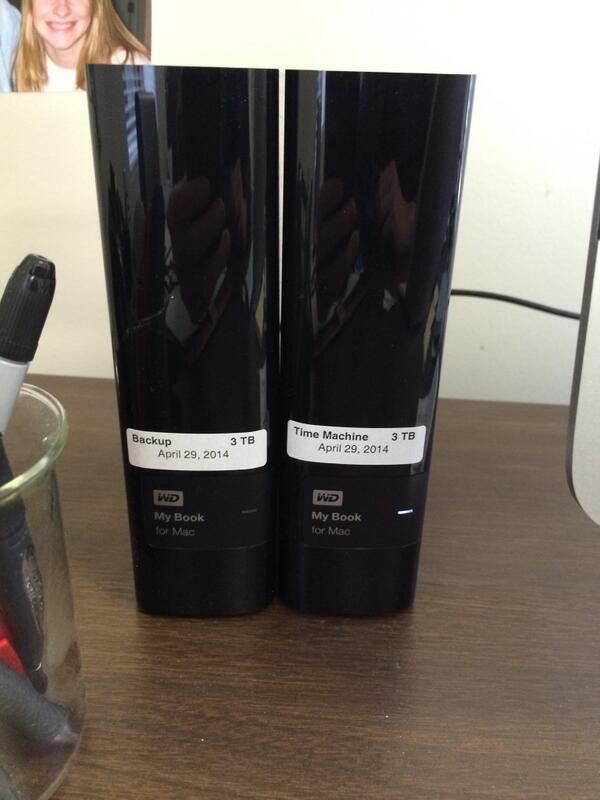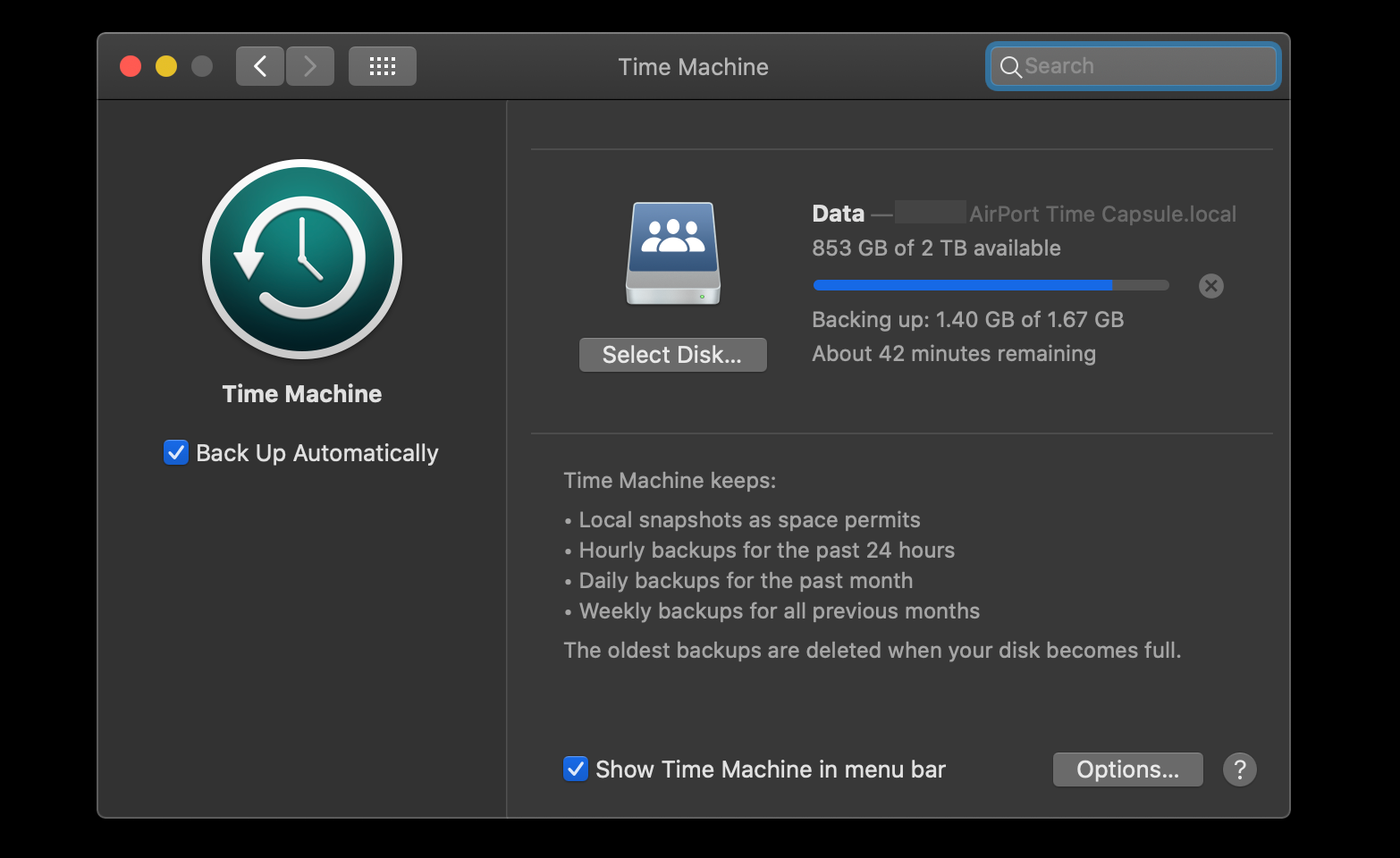

In addition to fixing this scheduling bug in High Sierra, that new version of macOS brought a complete new file system, APFS, designed to offer file system snapshots. To this day, if you run TM in Sierra and don’t shut down or restart your Mac, automatic scheduling of TM backups will eventually stop happening regularly. Unfortunately, there is a bug in Sierra which Apple never fixed, leading to failure of the DAS-CTS scheduling system after running continuously for about 5 days or more. This despatching system is run by two subsystems, DAS (Duet Activity Scheduler) and CTS (Centralized Task Scheduling), and aims to run each hourly backup within a period of 5-10 minutes around the intended hourly interval. There is no need for them to occur precisely every hour, so Apple added TM backups to a complex background despatching system which aims to call them off when the system is ready for them to run. The other change was to increase flexibility in the timing of backups. First, to ensure that backups remained within the scope of Spotlight search, once this sequence is complete, Spotlight’s mdworker processes index the latest backup into the main Spotlight indexes. However, the total size of backups inevitably rises until eventually even the largest backup storage is exhausted.ĭiagnosing problems in those early backups is straightforward, thanks to TM making relatively infrequent log entries marking each step of the way.īy the release of macOS Sierra, Apple had modified this simple behaviour in two respects. Prior to that, TM reduces the number of backups to minimise demands on their storage. The final maintenance phase ensured that hourly backups cover the most recent period. It looked at the FSEvents database on each volume it had to back up, discovered what needed to be copied into the new backup, copied those items across to the backup, and created the hard links required to make that look like a complete duplicate of the original.

If your internal storage contained one million files, of which only ten needed to be backed up, TM would have to create 999,990 hard links for that one backup alone.Īt its earliest and simplest, TM’s backup service, backupd, was run every hour as a scheduled task. The number of hard links in each backup would quickly become huge, as every file in that backup would have to be represented either by a hard link or a new backup. Without them, this scheme wouldn’t work: unchanged folders would have to be created in the backup as real folders containing many more hard links to the files within. Apple added them to HFS+ for this purpose.

Hard links to files are a common feature of file systems, but hard links to directories (folders) are not normally supported. Hard links are an incredibly efficient way of making each backup look as if it’s a complete copy of the original, when in fact all those files and folders which have remained unchanged since the last backup are represented by hard links back to the previous version.

#Use same external hard drive time machine 2 macs how to#
This is the first in a series of articles in which I will try to explain much of what I know about Time Machine (TM), starting from its basic principles, how it is implemented in macOS from Sierra (and earlier) to Catalina, and how to troubleshoot and fix its problems.


 0 kommentar(er)
0 kommentar(er)
